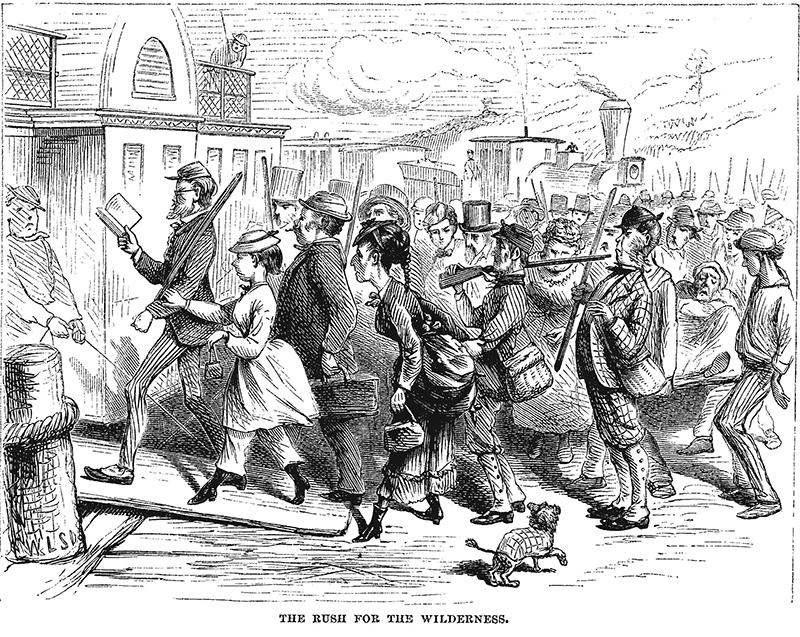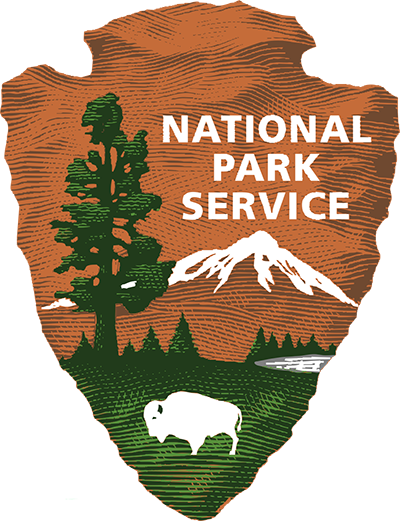Threads of History
Adventures in the Adirondack Wilderness
By John Krueger, Chair of the LCBP Heritage Area Program Advisory Committee.
Summer 1869
William Henry Harrison Murray, a prominent clergyman at the historic Park Street Church in Boston, wrote Adventures in the Wilderness in the spring of 1869 to introduce city-dwellers to the rewards of camping in the wilderness. Almost immediately, the little volume became both a best-seller and the center of a storm of controversy. Hundreds of tourists streamed to the Adirondacks that summer in what became known as “Murray’s Rush.”

“Murray’s Fools” scramble from the train at Whitehall to the steamer Adirondack. Harper’s New Monthly Magazine, August 1870
Under the subject heading “How To Get To The Wilderness” Murray wrote: “The best route by which to enter the wilderness is the following. It is easy and quick. The accommodations are excellent all the way through. I do not know how I can give a true impression of this route so briefly as by going, in imagination, with the reader, from Boston to the Lower Saranac, where I meet my guide.”
“I leave Boston Monday morning, we will say, at eight o’clock, on the Boston and Albany Railroad. At East Albany we connect with the Troy train; at Troy, with the Saratoga train, which lands you at the steamboat dock at Whitehall, Lake Champlain, at nine o’clock P. M. Going on board you sit down to a dinner, abundant in quantity and well served; after which you retire to your state-room, or, if so inclined, roll an arm-chair to the hurricane deck, and enjoy the rarest of treats, a steamboat excursion on an inland lake by moonlight.”
“At 4:30 A. M. you are opposite Burlington, Vt., and by the time you are dressed the boat glides alongside of the dock at Port Kent, on the New York side of the lake. You enter a coach which stands in waiting, and, after a ride of six miles in the cool morning air, you alight at the Ausable House, Keeseville. Here you array yourself for the woods, and, eating a hearty breakfast, you seat yourself in the coach at 7 A. M., the whip cracks, the horses spring, and you are off on a fifty-six mile ride over a plank road, which brings you, at 5 P. M., to Martin’s, on the Lower Saranac, where your guide, with his narrow shell drawn up upon the beach, stands waiting you. This is the shortest, easiest, and, beyond all odds, the best route to the Adirondacks. You leave Boston or New York Monday at 8, and reach your guide Tuesday at 5.”
Over the next three years, “Adirondack” Murray spoke more than five hundred times in the villages of New England and Northern New York, to nearly half a million people. “It was perhaps the most influential utterance I ever made,” he recalled, “judged by its influence on the people and the fashion of outdoor recreation which it promoted.” The book exerted a lasting influence on outdoor recreation in America and left an indelible mark on the history of the Adirondacks.
All the quotations in this brief account are drawn from the excellent edition published in 1970 by Syracuse University Press and The Adirondack Museum with an introduction and notes by Warder H. Cadbury.
